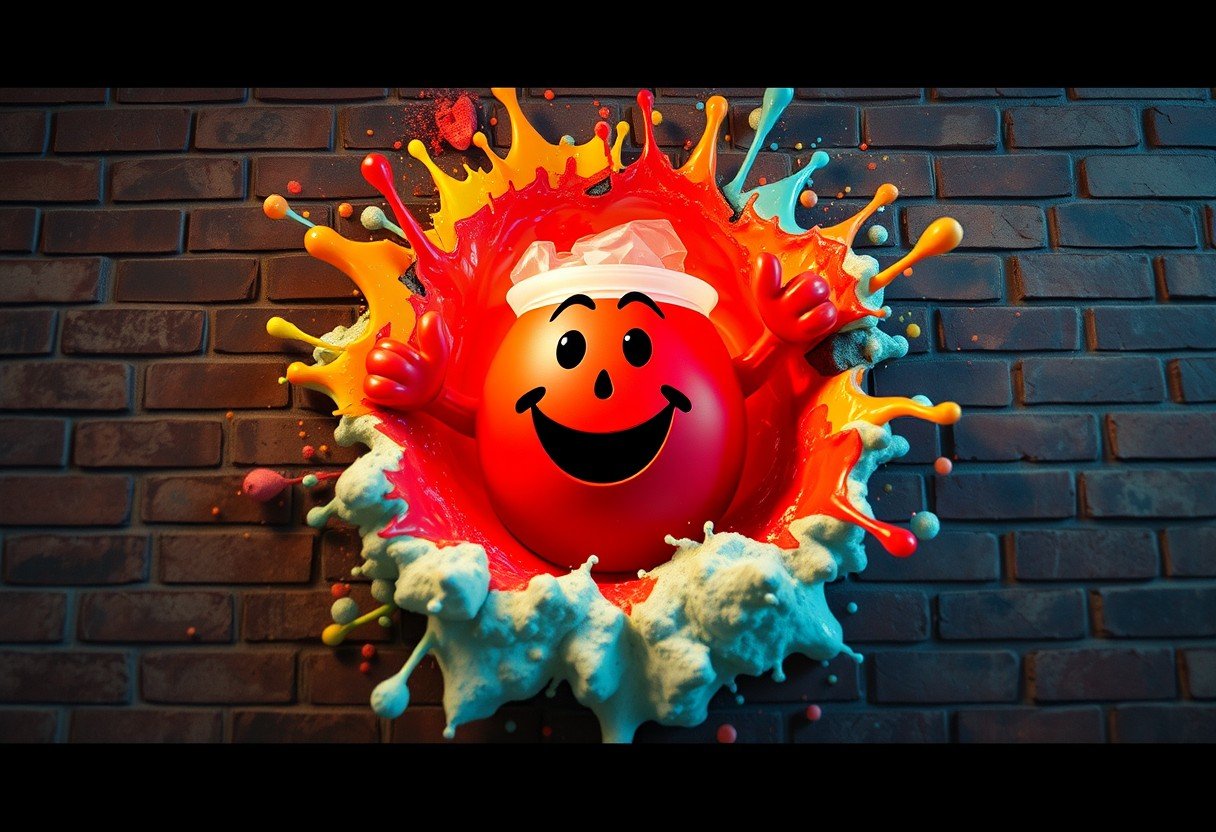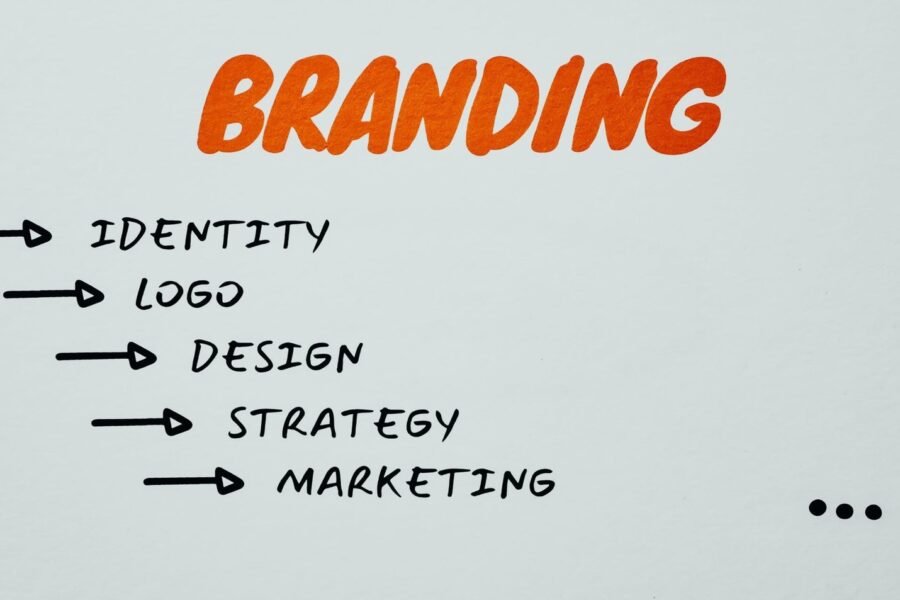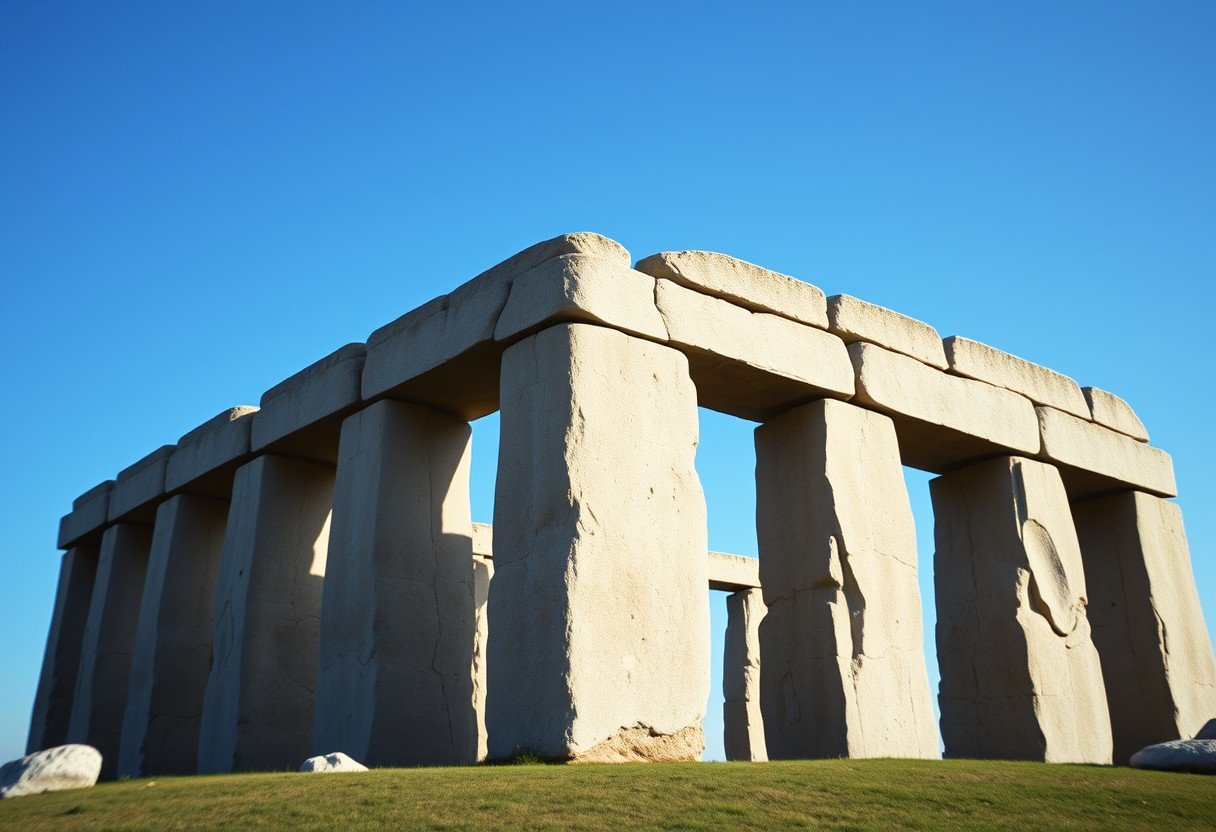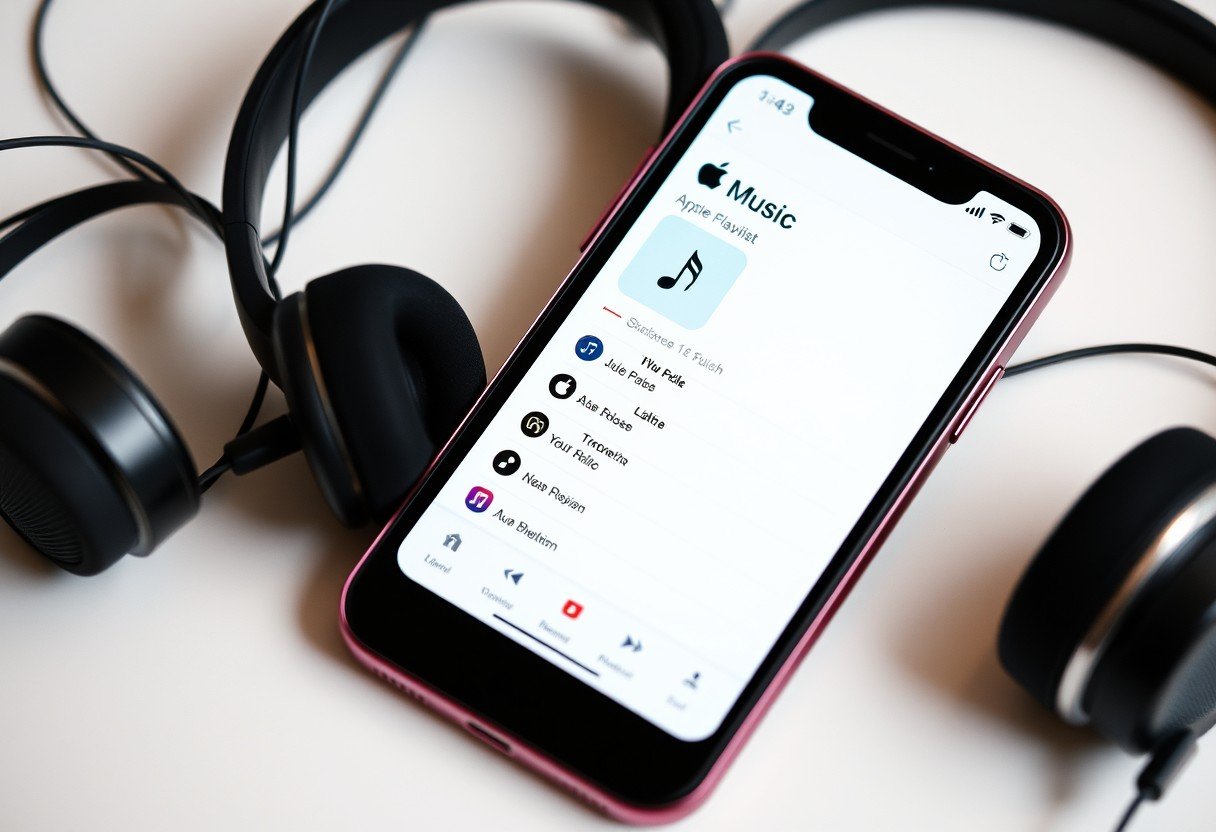The Kool-Aid Man bursts through a wall and shouts his famous line to kick off a fun moment. He first showed up in TV ads in the 1970s, but the brand began in Nebraska in 1927. Fans ask what he says, why he says it, and how the line became a meme. Here you will learn what he yells, where it came from, who created it, and why this simple shout still works today.
Iconic Catchphrase And Meaning
The Kool-Aid Man’s signature line is Oh yeah! and it is the phrase he shouts when he breaks through a wall. The short, loud line is easy to remember and easy to repeat. It matches the surprise entrance and the playful tone of the drink.
The phrase works because it is upbeat and simple. It signals good news, a party vibe, and quick refreshment. That is strong branding in just two words.
Advertisers use short sound bites so people recall a product fast. Oh yeah! does that job on TV, in memes, and in conversations. It has rhythm, a rising tone, and a friendly feel that fits family ads.
Fans also use the line as a joke when someone arrives at the perfect time. That keeps the catchphrase active in daily life.
History And Evolution
Edwin Perkins created Kool-Aid in 1927 in Hastings, Nebraska, after converting his Fruit Smack syrup into a powder to cut shipping costs. In 1953, General Foods bought the brand, and it later became part of Kraft, now Kraft Heinz. The smiling pitcher showed up in print ads before the full character became a TV star.
The live action wall crash and Oh yeah! persona reached national TV in the mid 1970s, building huge recall among kids and parents. Over time, the mascot changed from animation to live action to CGI, but the voice and energy stayed the same.
| Year | Milestone |
|---|---|
| 1927 | Kool-Aid launched by Edwin Perkins in Hastings, Nebraska |
| 1953 | Brand acquired by General Foods, later part of Kraft Heinz |
| 1970s | TV era of wall bursting mascot and Oh yeah! catchphrase |
| 1998 | Kool-Aid Days festival begins in Hastings, celebrating the brand |
Design shifts followed the times, from thicker outlines to brighter CGI. But the big grin, red pitcher, and doorway smashing entrance stayed at the core of the character.
That stable core helped the brand cross generations, as new ads echoed the same high energy moment people remembered from childhood.
Psychology Of Bold Entrances
Surprise entrances spark attention and laughter. A wall break turns a quiet scene into instant action, so the brain tunes in. That jolt pairs with a happy shout, which guides the mood toward fun.
Nostalgia also plays a major role, because the mascot brings back summer breaks, backyard parties, and simple shared treats. When the memory feels good, trust and warmth carry over to the brand.
Parents pass those feelings to kids, so the character stays fresh even when styles change. The catchphrase acts like a family handoff from one generation to the next.
The short line also lowers the thinking load. Viewers do not have to decode a complex joke. They just smile and enjoy the moment.
Physics Of Wall Breaking
Real houses use wooden 2×4 studs with drywall panels, often half inch or five eighths inch thick, spaced about sixteen inches on center. Plaster and lath walls are harder to punch through than modern drywall. Exterior walls add insulation and sheathing that make the job even tougher.
Smashing a stud wall cleanly without hitting a stud would still send dust and fragments flying. Safety gear and planning are needed in real demos. The mascot scene is fantasy that speeds past all those limits.
In reality, controlled demolition uses tools, protective clothing, and checks for wires and pipes before any hit. The ad swaps all that for a quick, comic blast to deliver a fun reveal.
That gap between fantasy and physics is part of the charm. Viewers know it is pretend, so they enjoy the chaos without worry.
Variations Across Media
The Oh yeah! line shows up in TV parodies, web videos, and gaming references. Some versions play the shout as a punchline, while others use it as a surprise cameo.
- Animated shows reference the wall crash to spoof dramatic entrances.
- Internet memes remix the phrase for jokes about timing and surprise.
- Fans use the line in reaction posts to signal good news or comic relief.
These uses keep the phrase alive outside classic ads. Each remix adds a twist, but the upbeat meaning remains intact.
Because the words are short and clear, they work across platforms and ages without losing the original spirit.
Cultural Impact And Memes
The mascot moved beyond drinks and into American pop culture. Hastings, Nebraska hosts Kool-Aid Days each August to honor the local invention and its legacy with families and collectors.
Memes help the line stay current by riding new trends. A funny two word burst fits captions, shorts, and reaction clips. That makes the phrase easy to reuse when news or jokes need a fast cheer.
The brand’s owner, Kraft Heinz, benefits from this steady stream of organic mentions, as users do the sharing work for free. That kind of social lift is hard to buy and hard to beat.
Classroom teachers and marketers even cite the catchphrase when explaining how sound bites build recall. It is a real world case of how audio branding works.
Future Of The Kool-Aid Man
The next stage will likely focus on short video platforms, creator tie ins, and interactive filters. The catchphrase is perfect for quick clips that need a loud, fun hook.
Brands now test augmented reality masks and voice triggers that let users shout Oh yeah! with an instant visual effect. That keeps the idea playful and shareable.
Family friendly games, limited edition drops, and festival moments can refresh the character while keeping the core voice the same.
If the entrance stays bold and the line stays short, the mascot will keep landing with new fans and old ones alike.
FAQ
What does the Kool-Aid Man say when he breaks through a wall?
He shouts Oh yeah! as his signature line. The short phrase matches the surprise entrance and sets a happy, party tone.
When did the Kool-Aid Man first appear on TV?
The wall bursting TV era started in the 1970s, following earlier print ads with a smiling pitcher. The shift to TV brought the loud voice and action to families nationwide.
Who created Kool-Aid and where did it start?
Edwin Perkins launched Kool-Aid in 1927 in Hastings, Nebraska. The town still celebrates with the annual Kool-Aid Days festival.
Why did the catchphrase become so popular?
It is short, positive, and fun to repeat, which boosts ad recall. The line also taps nostalgia, so people enjoy saying it again as adults.
Is smashing through a wall realistic?
No, it is a comic effect for ads. Real walls have studs, wiring, and drywall, so safe demolition needs tools, checks, and protection.
How has the character changed over time?
The look moved from animation to live action to CGI, but the big grin and Oh yeah! voice stayed. That consistency helps the brand cross generations.








Leave a Comment